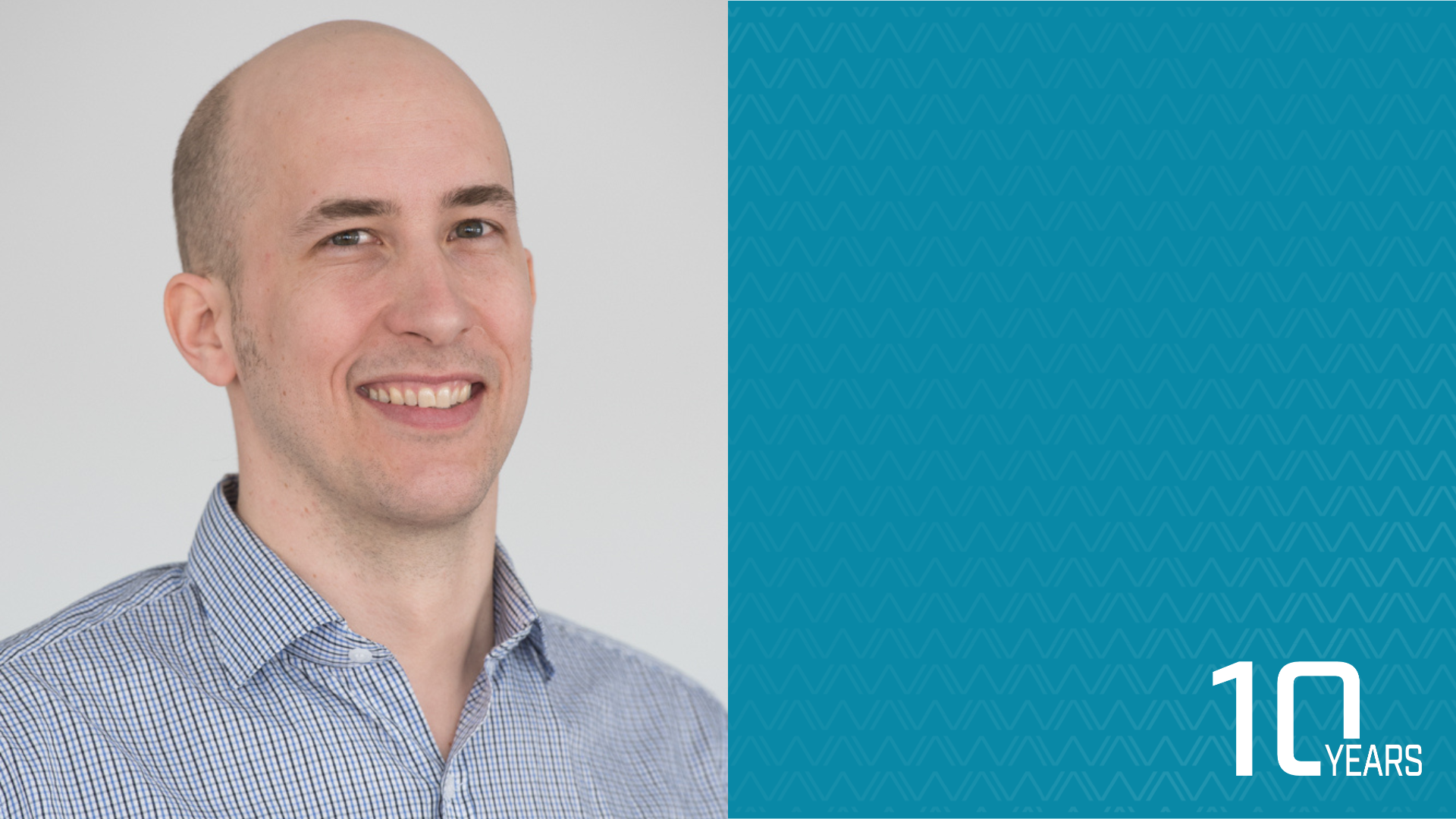When Tobias Sundqvist began his research journey in 2018, there was no research department at Tietoevry. Today, he is a key figure in the company’s AI strategy – and has helped build a research environment from the ground up.
Tietoevry is a Nordic IT consultancy with a global reach. The company delivers digital solutions to clients across sectors such as telecommunications, banking, forestry, and healthcare. When Tobias Sundqvist – with a background in troubleshooting and systems development – began his industrial PhD at Tietoevry through the WASP graduate school, there was neither a research unit nor a clear AI strategy in place.
“We didn’t really have any AI operations before 2018. It was when I started my research that we began building it,” Tobias explains.
A technical curiosity turned research mission
Tobias had already worked at Tietoevry for several years in various roles – from systems engineering and testing to project management – when he began exploring how AI could be used to improve troubleshooting in complex systems. He saw a growing need to analyze large volumes of data and detect anomalies in system behavior, something traditional methods struggled with.
“I’ve always enjoyed finding faults and improving things. When I saw the opportunity to dive deeper into AI, it felt natural to pursue it in a research context,” he says.
Tietoevry submitted a proposal to Umeå University, and together they applied to the WASP graduate school. Tobias was accepted in 2018 as an industrial PhD student, with Professor Erik Elmroth as his main supervisor. This marked the beginning of a five-year research journey.
AI as a tool to understand complex systems
Tobias’s research has focused on how AI can be used to streamline troubleshooting and enhance understanding of complex systems – particularly in telecom. By analyzing large volumes of log data and identifying behavioural anomalies, he has developed methods that can identify deviations in application behaviour, narrow down the root cause and improve the observability of the system.
“It’s about understanding what’s happening inside the systems. When several components interact, it’s hard to manually pinpoint what’s going wrong. AI helps us detect patterns and deviations that would otherwise go unnoticed,” he explains.
From theory to practice – Directly in industry
A key part of Tobias’s work has been to integrate the research methods in real-world environments. Through collaborations with Ericsson and the WASP Research Arena for Operational Data (WARA Ops), his methods have been evaluated in live systems – in September 2025 their ongoing ARMC3 project intend to run the experiments in Ericsson’s “5G garage” in Lund.
“That’s what makes the industrial PhD role so valuable. You don’t just develop new methods – you get to see if they actually work in practice. That’s often missing in academic research,” says Tobias.
He emphasizes the importance of ensuring that research benefits industry – and that companies gain access to cutting-edge academic expertise. An industrial PhD is like a bridge between these two worlds.
“It’s a shame that so much research never gets used. By collaborating with universities, we can solve real problems and push research forward. That’s something I try to pass on to the students doing their theses with us.”
A graduate school that makes a difference
His academia-industry mindset was cultivated during his time with WASP graduate school. On his journey to becoming a researcher within industry, he received strong support from the WASP program – both in terms of coursework and networking.
“It was a fantastic program. Everyone teaching the courses was truly passionate about their subjects, and it showed. It gave me a broad understanding of how AI can be applied in different contexts,” he says.
He strongly recommends that other PhDs take part in WASP’s summer schools and international gatherings.
“You might not benefit directly from the course content, but the connections you make – with other researchers and with industry – are incredibly valuable. That’s something I really encourage others to take advantage of.”
Building a research environment from scratch
Tobias became Tietoevry’s first – and still only – industrial PhD student. But his work has laid the foundation for a growing research initiative within the company. Today, he leads a team that works on both client projects and academic collaborations, including the ARMC3 project with WARA Ops, co-funded by Vinnova and Tietoevry.
“We’ve built our own lab where we can simulate real-world environments – like a warehouse with autonomous robots. This allows us to test AI solutions in realistic scenarios while also contributing to sustainability goals,” he says.
Future challenges and opportunities
Despite the progress, Tobias sees several challenges ahead. One of the biggest is talent development – finding and training people with the right AI skills.
“There’s still some fear around AI, both among developers and within organizations. At the same time, the technology is evolving rapidly, and we need to keep up. That requires both education and a willingness to adapt,” he says.
Still, he remains optimistic. With the right investments and continued collaboration between academia and industry, he sees great potential for Tietoevry to stay at the forefront.
“We’ve shown that it’s possible to build a research operation from scratch. Now it’s about continuing to grow it – and making sure it has real impact,” he concludes.
Thesis
Published: June 12th, 2025
[addtoany]


